43 nutrient content claims on food labels
Nutrient Content Claim vs Health Claim - LabelCalc Nutrient content claims, which are commonly used on food labels, either refer to the amount of a nutrient in a product or compare the levels of a nutrient in that food to a similar reference food. When referring to the amount of a nutrient in a product, words such as "low," "free," and "high" are often used. Food Labeling Claims Chart Food Nutritional Facts Guide ... Family nutrition article: nutrient content claims and facts article w/ printable nutrient claims facts chart. Food labeling information- Ever wonder what all the food label nutrient label claims really mean? What is the difference is between fat free, saturated fat free, low fat, lite, and reduced fat? Find out nutrient information and the facts about nutrient claims to make healthier food ...
Regulating health claims on food labels using nutrient ... Objective: Proposed Australian regulation of claims on food labels includes requirements for products carrying a health claim to meet nutrient profiling criteria. This would not apply to nutrition content claims. The present study investigated the number and healthiness of products carrying claims and the impact of the proposed regulation.

Nutrient content claims on food labels
Factual Food Labels: Health Claims - University of Texas ... Nutrient Content Claims. In 1990 under the same Nutrition Labeling and Education Act, nutrient content claims were also allowed on food packaging. This type of claim describes the nutritional content and nutrient levels of the food product in comparison to the accepted standard of the product. Nutritionist Pro™ | Nutrition Food Labels Nutrient Content Claims. See if your food item qualifies for any nutrient claims such as Low Fat, Sugar Free or more. Ingredient list and Allergens — Easily identify and update ingredient list or allergens present in foods. Nutrient % and Rounding Rules — Label displays both unit (g, mg, mcg) values and % as required by regulations. The Effects of Nutrition Knowledge on Food Label Use: A ... One goal of nutrient content claims is to communicate the value or relative amount of a specific nutrient within a food product (e.g., good source of fiber, fat free, low calorie). Claims have been shown to impact how other food label information is processed and to influence other dietary behaviors ( Mathios & Ippolito, 1999; Williams, 2005 ).
Nutrient content claims on food labels. Nutrition content claims and health claims - Food Standards Nutrition content claims are about the content of certain nutrients or substances in a food, such as 'low in fat ' or 'good source of calcium'. These claims need to meet certain criteria. For example, food with a 'good source of calcium' claim needs to contain at least the amount of calcium specified in the Standard. Health claims Understanding Food Labels and Health Claims - Nutrition ... This label is called a Nutrition Facts panel, which gives information on the number of servings per container, the number of calories per serving, and certain nutrients. Specifically, it lists the macronutrients and four of the most important micronutrients people need to pay special attention to, such as Vitamin D, Calcium, Iron, and potassium. Nutrition, health and related claims - Food Standards Standard 1.2.7 - Nutrition, health and related claims in the Food Standards Code (the Code) set out requirements for making nutrition content and health claims about food. Find out more about the Standard and the different types of claims. The Implementation Subcommittee for Food Regulation (ISFR) has guidance on how to comply with Standard 1.2.7. Nutrition claims - European Commission A claim that a food is high in omega-3 fatty acids, and any claim likely to have the same meaning for the consumer, may only be made where the product contains at least 0,6 g alpha-linolenic acid per 100 g and per 100 kcal, or at least 80 mg of the sum of eicosapentaenoic acid and docosahexaenoic acid per 100 g and per 100 kcal.
Status of Nutrition Labeling, Health Claims, and Nutrient ... The Food and Drug Administration (FDA) conducts studies of food labels as part of its ongoing monitoring of the nutritional status of the US population. In 1994 FDA nutrition labeling rules were implemented and in 1997 the Food Label and Package Survey characterized various aspects of the labeling o … CFR - Code of Federal Regulations Title 21 - Food and Drug ... Mar 29, 2022 · (b) Label statements that are not implied claims. Certain label statements about the nature of a product are not nutrient content claims unless such statements are made in a context that would make them an implied claim under § 101.13(b)(2). The following types of label statements are generally not implied nutrient content claims and, as such ... Nutrient Claims on Food Labels Nutrient claims describe the content of a food, including the amount of nutrients, calories, cholesterol or fiber, but not in exact amounts. Usually on the front of the food label, the nutrient claim provides a quick comparison between similar products. Ever wondered about the validity of nutrient claims? Vitamin and mineral nutrient claims - Specific nutrient ... Vitamin and mineral claim requirements On the label or advertisement for a food, it is not permissible to make a statement or claim that characterizes the vitamin or mineral content of a food unless: a Daily value (DV) for the vitamin or mineral has been established [D.01.004 (1) (a), D.02.002 (1) (a), FDR]
eCFR :: 21 CFR 101.54 -- Nutrient content claims for "good ... (B) Quantitative information comparing the level of the nutrient in the product per labeled serving with that of the reference food that it replaces (e.g., "Fiber content of white bread is 1 gram (g) per serving; (this product) 3.5 g per serving") is declared adjacent to the most prominent claim or to the nutrition label, except that if the ... Nutrient Content Claims on a Food Label - LabelCalc Spotting Nutrient Content Claims. When you look at a food label, several statements can be made on the front of the panel to grab the attention of the consumer and inform them that the food product contains nutrients and health benefits that may speak to their personal dietary lifestyle. Nutrition content and health claims - Obesity Evidence Hub Nutrient content claims on food labels. Nutrient content claims such as 'low in fat' or 'good source of calcium' must meet certain criteria set out in the Food Standards Code 2 - for example a product claimed to be a 'good source of calcium' must contain at least the amount of calcium specified in the Code. 1 Nutrition content ... Nutrient content claims - Canadian Food Inspection Agency Omega-3 and omega-6 polyunsaturated fatty acid claims. Cholesterol claims. Sodium (salt) claims. Potassium claims. Carbohydrate and sugars claims. Dietary fibre claims. Vitamin and mineral nutrient claims. "Light" claims. Comparative nutrient content claims.
21 CFR § 101.65 - Implied nutrient content claims and ... (a) General requirements. An implied nutrient content claim can only be made on the label and in labeling of the food if: (1) The claim uses one of the terms described in this section in accordance with the definition for that term; (2) The claim is made in accordance with the general requirements for nutrient content claims in § 101.13; and (3) The food for which the claim is made is labeled ...
Label Claims for Conventional Foods and Dietary ... Nutrient Content Claims The Nutrition Labeling and Education Act of 1990 (NLEA) permits the use of label claims that characterize the level of a nutrient in a food (i.e., nutrient content claims)...
Nutrient Content Claims | FDA Nutrient Content Claims. See Claims That Can Be Made for Conventional Foods and Dietary Supplements for definitions of claims. Final Rule: Food Labeling: Nutrient Content Claims; Alpha-Linolenic ...
Food Packaging Claims | American Heart Association "Nutrient content claims" are used for two purposes: To describe the level of a nutrient in the product using terms such as free, high, and low or To compare the level of a nutrient in a food to another food using terms such as more, reduced, and lite.
Nutrient Claims on Food Labels Sodium content cannot exceed 360 mg per serving for individual foods and 480 mg per serving for meal-type products. If a food is labeled "healthy" or makes a health claim, it cannot contain any nutrient that increases the risk for disease. It must contain no more than 20% of the DV per serving of total fat, saturated fat, cholesterol, or sodium.
History of Nutrition Labeling - Front-of-Package Nutrition ... Nutrients to be listed on nutrition labels included calories, calories from fat, total fat, saturated fat, cholesterol, sodium, total carbohydrate, dietary fiber, sugars, protein, vitamins A and C, calcium, and iron.

Mean nutrient profile score across categories of RTE snack food products | Download Scientific ...
eCFR :: 21 CFR 101.65 -- Implied nutrient content claims ... An implied nutrient content claim can only be made on the label and in labeling of the food if: ( 1) The claim uses one of the terms described in this section in accordance with the definition for that term; ( 2) The claim is made in accordance with the general requirements for nutrient content claims in § 101.13; and.
Federal Register :: Food Labeling: Nutrient Content Claims ... The Food and Drug Administration (FDA, the Agency, or we) is issuing this rule to prohibit certain nutrient content claims for foods, including conventional foods and dietary supplements, that contain omega-3 fatty acids, based on our determination that such nutrient content claims do not meet the requirements of the Federal Food, Drug, and ...
Nutrient content claims: what they mean - Canada.ca Table of nutrient-content claims and what they mean. The food provides an amount of a nutrient that is so small it likely won't have any effect on your body. The food is processed/modified so that it contains at least 25% less of the nutrient when compared with a similar product. Contains no added fats or oils or added butter or ghee, or ...
US FDA to introduce nutrient content symbols on food ... Any potential symbol would represent the nutrient content claim 'healthy' and could be used voluntarily by companies on food product labels USFDA has recently issued a notice to brief about conducting research on the use of 'healthy' symbols on food products. Conrad Choiniere, PhD, director of the Office of Analytics and Outreach, Center for Food
Understanding Food Labels | The Nutrition Source | Harvard ... Under the Food Allergen Labeling and Consumer Protection Act of 2004, eight major food allergens—milk, fish, tree nuts, peanuts, shellfish, wheat, eggs, and soybeans—are required to be listed in a "contains" statement near the Ingredients list if present in a food. An example would be "contains wheat, milk, and soy."
The Effects of Nutrition Knowledge on Food Label Use: A ... One goal of nutrient content claims is to communicate the value or relative amount of a specific nutrient within a food product (e.g., good source of fiber, fat free, low calorie). Claims have been shown to impact how other food label information is processed and to influence other dietary behaviors ( Mathios & Ippolito, 1999; Williams, 2005 ).
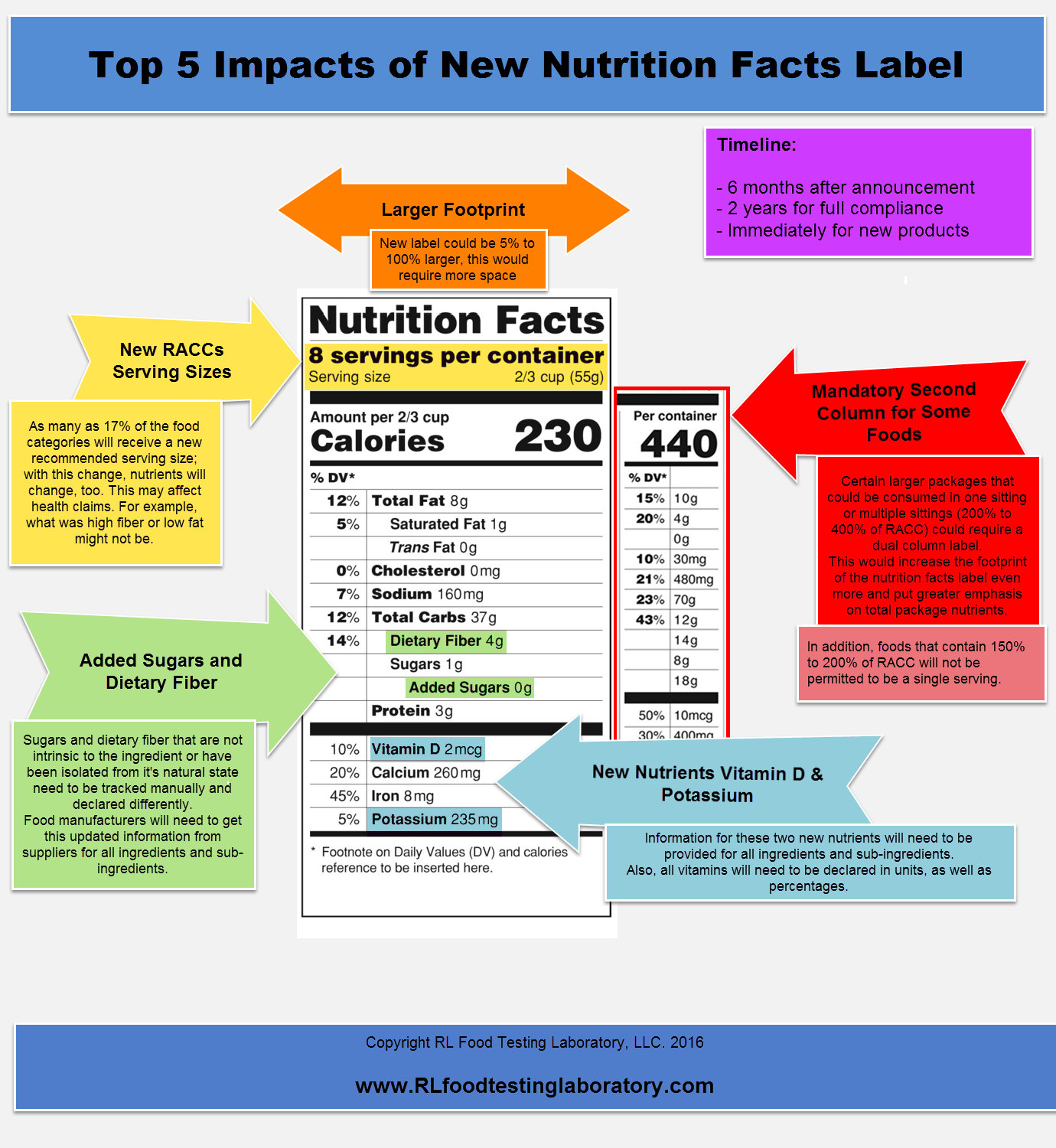
RL Food Testing Laboratory Urges Food Manufacturers to Start New Mandatory Nutrition Facts Label ...
Nutritionist Pro™ | Nutrition Food Labels Nutrient Content Claims. See if your food item qualifies for any nutrient claims such as Low Fat, Sugar Free or more. Ingredient list and Allergens — Easily identify and update ingredient list or allergens present in foods. Nutrient % and Rounding Rules — Label displays both unit (g, mg, mcg) values and % as required by regulations.
Factual Food Labels: Health Claims - University of Texas ... Nutrient Content Claims. In 1990 under the same Nutrition Labeling and Education Act, nutrient content claims were also allowed on food packaging. This type of claim describes the nutritional content and nutrient levels of the food product in comparison to the accepted standard of the product.

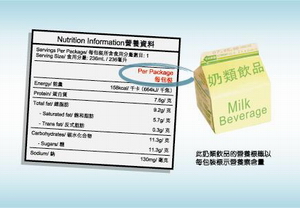
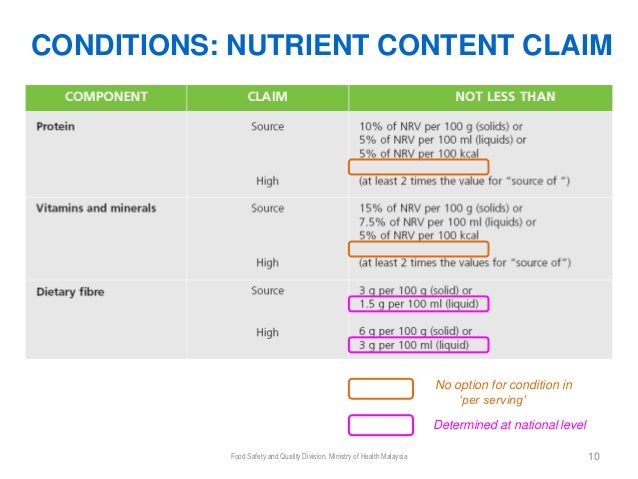
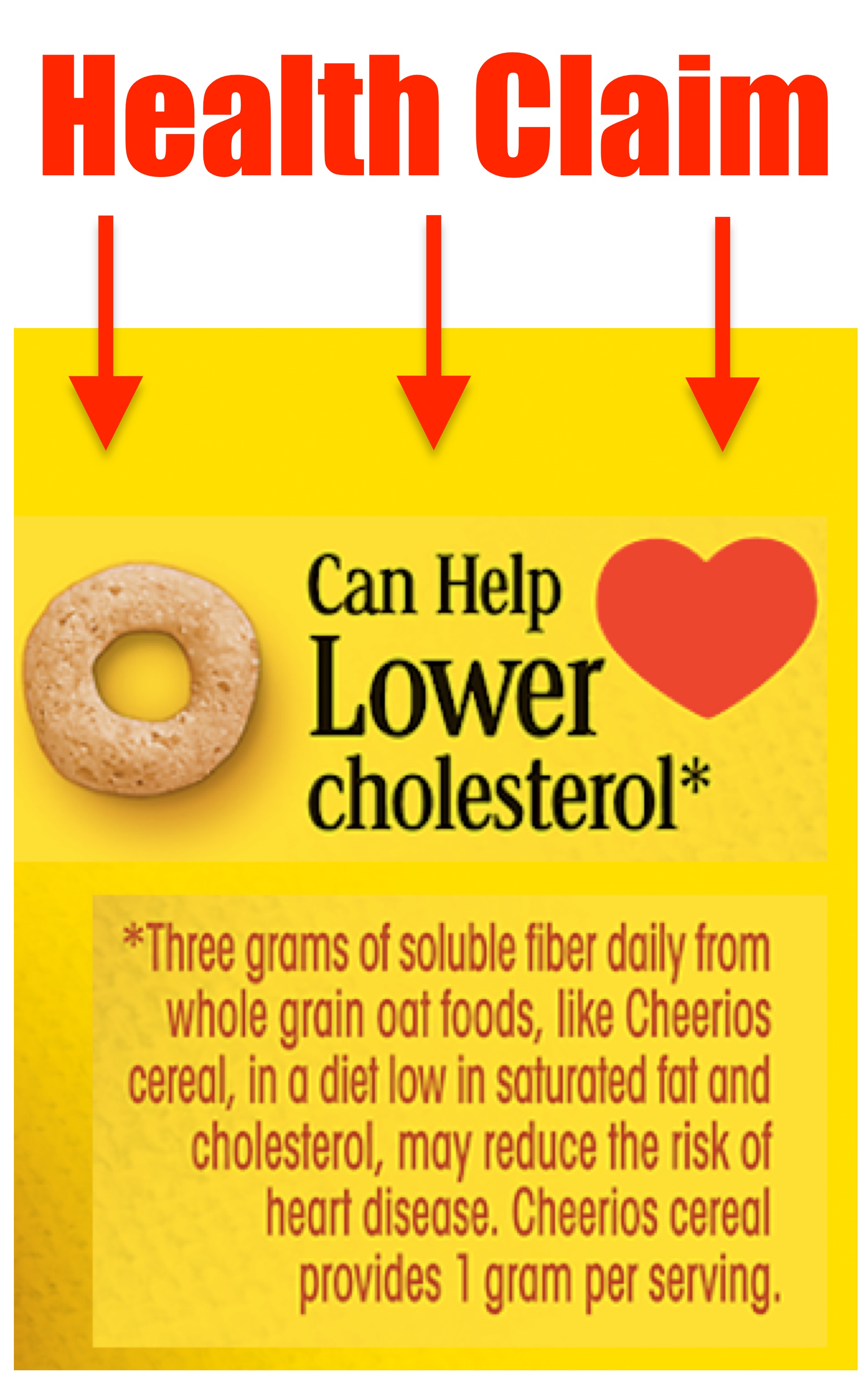

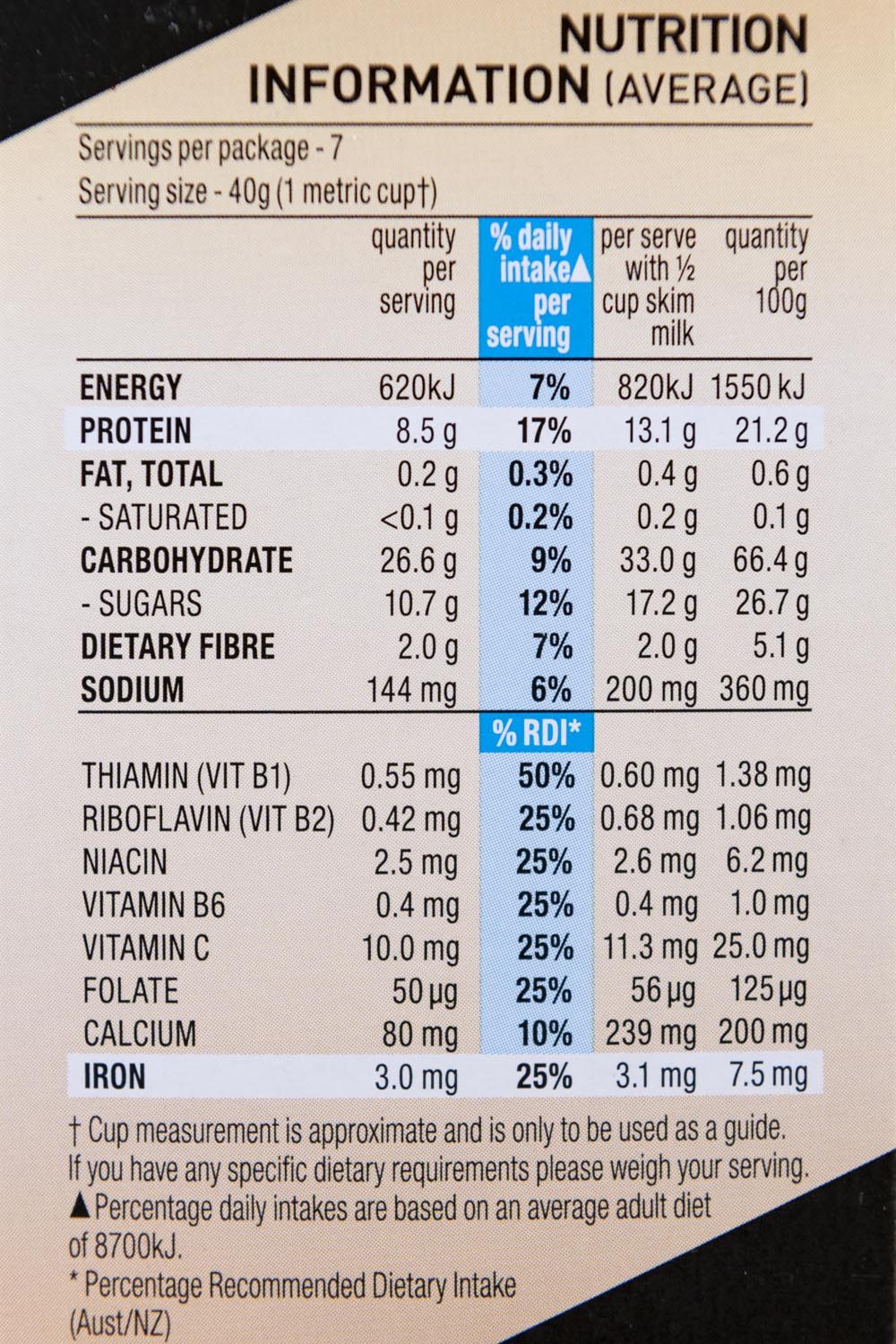

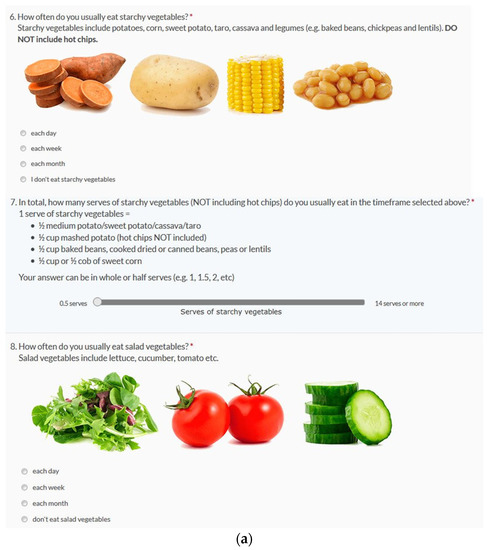

Post a Comment for "43 nutrient content claims on food labels"